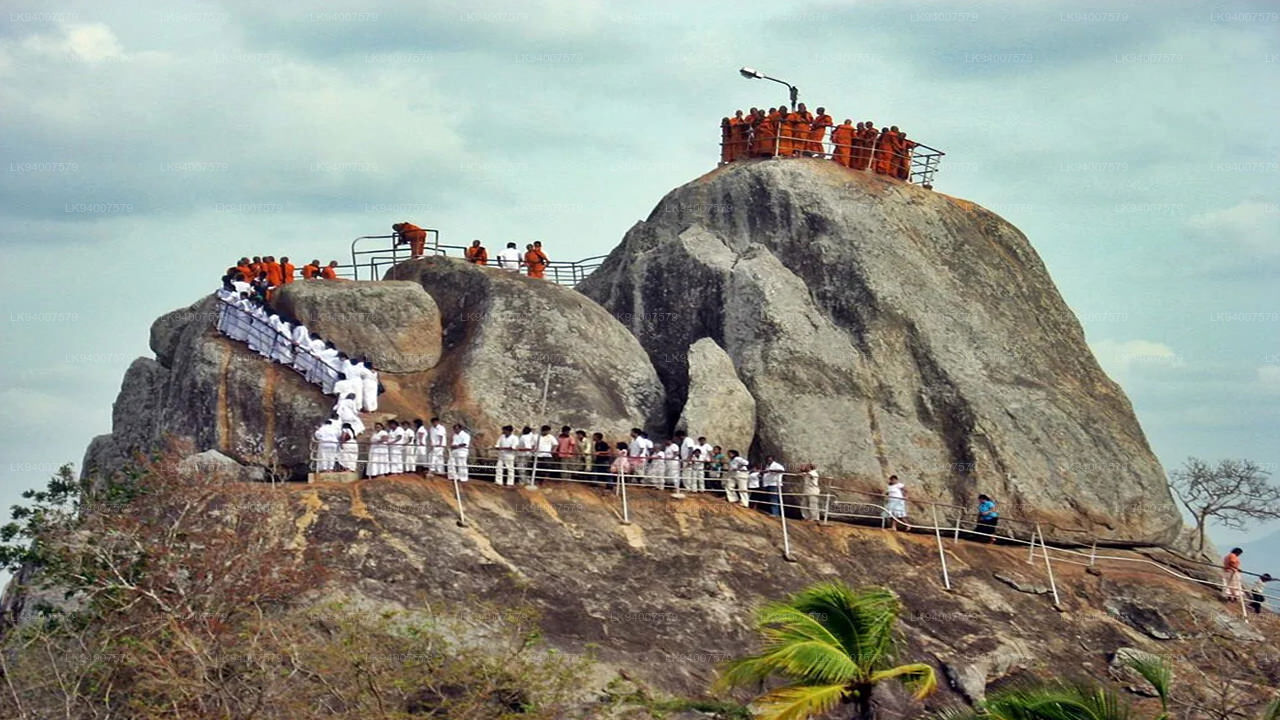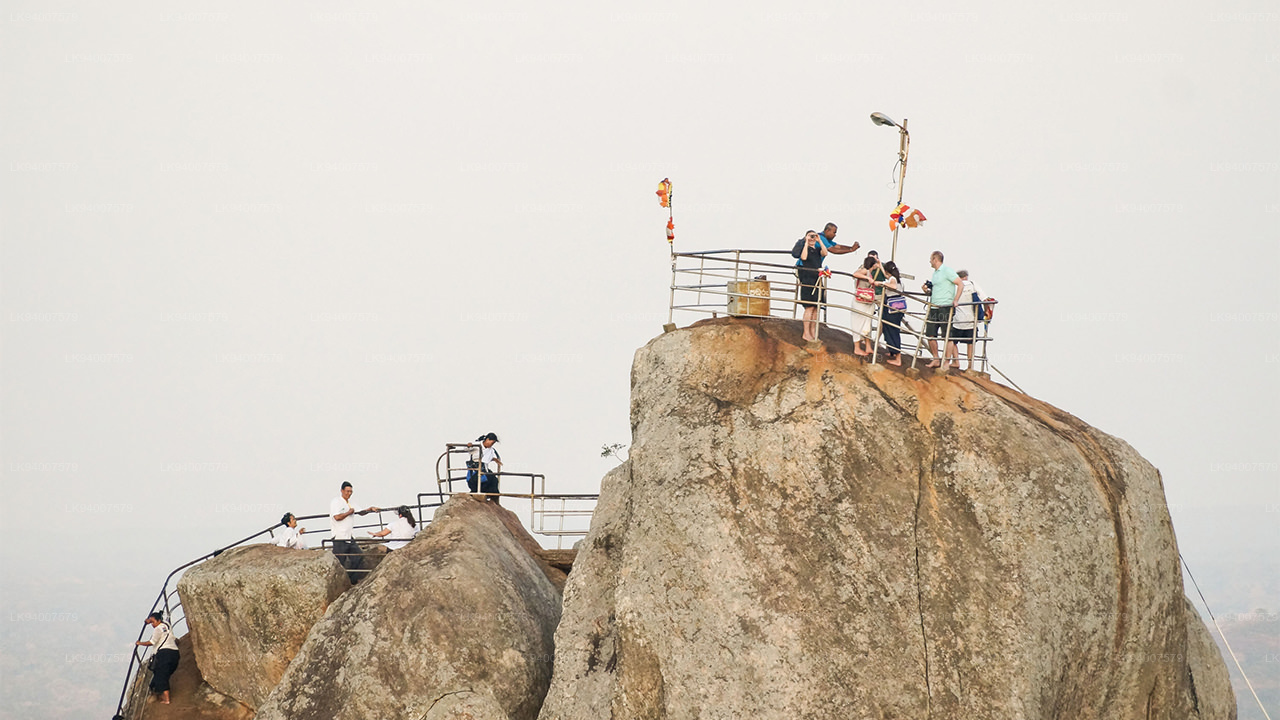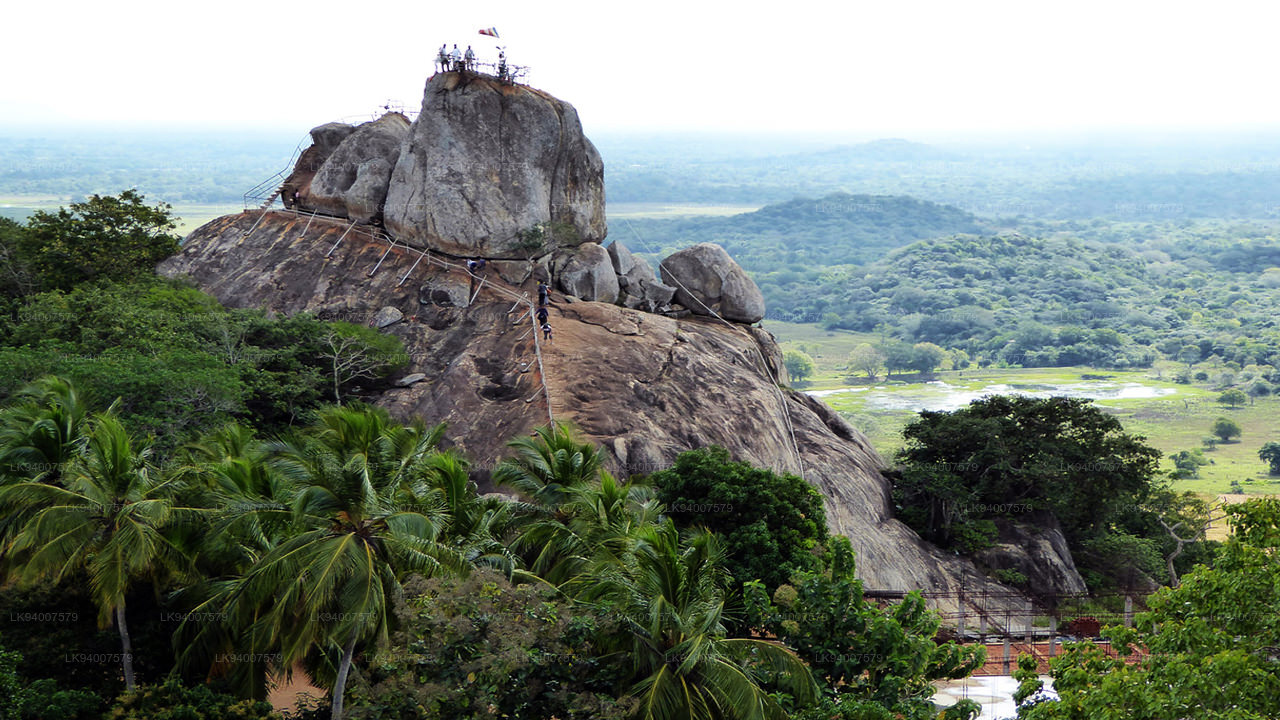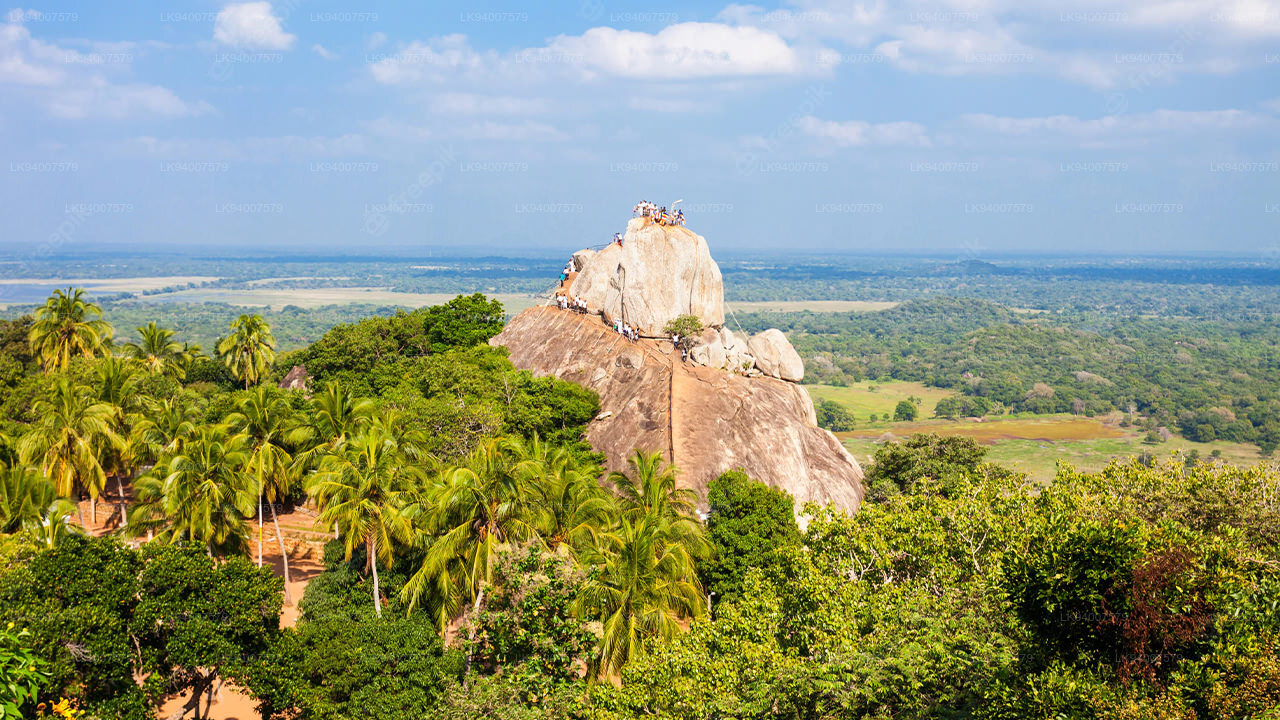
Città di Anuradhapura
Anuradhapura appartiene alla Provincia Centro-Settentrionale dello Sri Lanka. Anuradhapura è una delle antiche capitali dello Sri Lanka, famosa per le sue rovine ben conservate dell'antica civiltà lankese. La città, oggi Patrimonio dell'Umanità UNESCO, si trova 205 km a nord dell'attuale capitale Colombo, in Sri Lanka.
Aradhana gala



Eight miles east of Anuradhapura, close to the Anuradhapura – Trincomalee Road is situated the “Missaka Pabbata” which is 1,000 feet (300 m) in height and is one of the peaks of a mountainous range. Geographically, the mountain range consists of three main hills: Ambastala Plateau of the Mango. Rajagiri, Mountain of the King, and Aanaikuddy the Mountain of the Elephant. The word ‘Aanaikuddy’ is Tamil. Thus, this mountain range should have some connection with the Tamils, probably the Tamil Buddhist Monks.
According to Dipavamsa and Mahavamsa, Thera Mahinda came to Sri Lanka from India on the full moon day of the month of Poson (June) and met King Devanampiyatissa and the people, and preached the doctrine. The traditional spot where this meeting took place is revered by the Buddhists of Sri Lanka. Therefore in the month of Poson, Buddhists make their pilgrimage to Anuradhapura and Mihintale.
In Sinhala Mihin-Thalé literally means the “plateau of Mihindu”. This plateau is the flat terrain on top of a hill from where Arahat Mihindu was supposed to have called King Devanampiyatissa, by the King’s first name to stop him shooting a deer in flight. Hence, “Mihin Thalé” is a specifically Sinhala term. This is how the place has been called and still is, in the local vernacular “Sinhala”. A study of the local vernacular will give ample proof for this. Therefore, the supposition that this name “Mihin Thalé” was derived from the Tamil name Mahinda Malai is erroneous and unfounded.
This is said have been called Cetiyagiri or Sagiri, even though it was more popularly known as Mihintale – the cradle of Buddhism in Sri Lanka.
Aradhana Gala is on a summit of a hill and faces Maha Seya. Even during very windy weather pilgrims do not fail to visit this rock, which has iron railings to help them to climb. In the ancient books such as the Mahavamsa it is written that Mahinda came to Sri Lanka by travelling through the air. He came down and landed at Sri Lanka on the top of the Aradhana Gala.
Informazioni sul distretto di Anuradhapura
Anuradhapura appartiene alla Provincia Centro-Settentrionale dello Sri Lanka. Anuradhapura è una delle antiche capitali dello Sri Lanka, famosa per le sue rovine ben conservate dell'antica civiltà cingalese. La città, ora Patrimonio dell'Umanità UNESCO, si trova 205 km a nord dell'attuale capitale Colombo, in Sri Lanka. Nella città sacra di Anuradhapura e nelle sue vicinanze si trovano numerose rovine. Le rovine consistono in tre classi di edifici: dagoba, edifici monastici e pokuna (stagni). La città possedeva alcuni dei sistemi di irrigazione più complessi del mondo antico; situata nella zona arida del paese, l'amministrazione costruì numerose cisterne per irrigare i terreni. La maggior parte dei civili è cingalese, mentre nel distretto vivono anche tamil e mori dello Sri Lanka.
Informazioni sulla provincia centro-settentrionale
La Provincia Centro-Settentrionale, la più grande del paese, copre il 16% della superficie totale del paese. La Provincia Centro-Settentrionale è composta da due distretti chiamati Polonnaruwa e Anuradhapure. Anuradhapura è il distretto più grande dello Sri Lanka. La sua superficie è di 7.128 km². La Provincia Centro-Settentrionale ha numerose potenzialità per gli investitori che desiderano avviare le proprie attività, in particolare nei settori dell'agricoltura, dell'industria agroalimentare e dell'allevamento. Oltre il 65% della popolazione della Provincia Centro-Settentrionale dipende dall'agricoltura di base e dall'industria agroalimentare. La Provincia Centro-Settentrionale è anche chiamata "Wew Bendi Rajje" perché nella provincia si trovano più di 3.000 serbatoi di medie e grandi dimensioni. Sri Maha Bodiya, Ruwanweli Seya, Thuparama Dageba, il monastero di Abayagiri, Polonnaruwa Rankot Wehera e Lankathilake sono luoghi di interesse.














